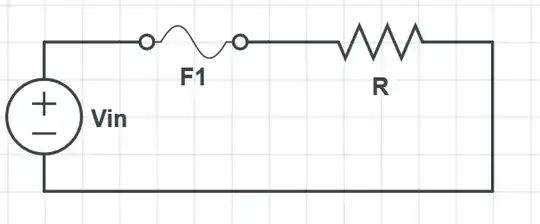PTCs come with a maximum voltage rating which, according to the answer for this question is essentially because of instantaneous power across the device.
Usually, a PTC is placed across a low-resistance voltage source. However, in my case, the PTC is in series with a resistor which is much greater than the R1max of the device, and the possible voltage across the circuit is greater than the nominal Vdc of the PTC I would like to use.
Whilst the PTC is conducting, the voltage across it does not violate the Vdc, since most of the voltage will be dropped across the resistor. Once the PTC trips, most of the voltage will be across the PTC since it will be in a high-resistance state, which would likely violate the Vdc rating of the PTC.
Is it safe to operate it in this configuration? My theory is that it might possibly be safe, since the power dissipated is limited by the in-line resistance, but I don't know what calculations I might be able to use to show this is/isn't true.
For a concrete example, the PTC is a Bourns MF-NSHT016KX with a Vdc of 30V, an I_trip of 0.8A and an R1_max of 6R, and is in a circuit with a series resistance of 22R, meaning the PTC will trip somewhere about Vin=20V (as desired). I would like to be able to expose the circuit to Vin=40V.
(p.s. choosing a PTC with a higher Vdc rating introduces other compromises that I am not willing to make. Similarly for resistor power ratings).
